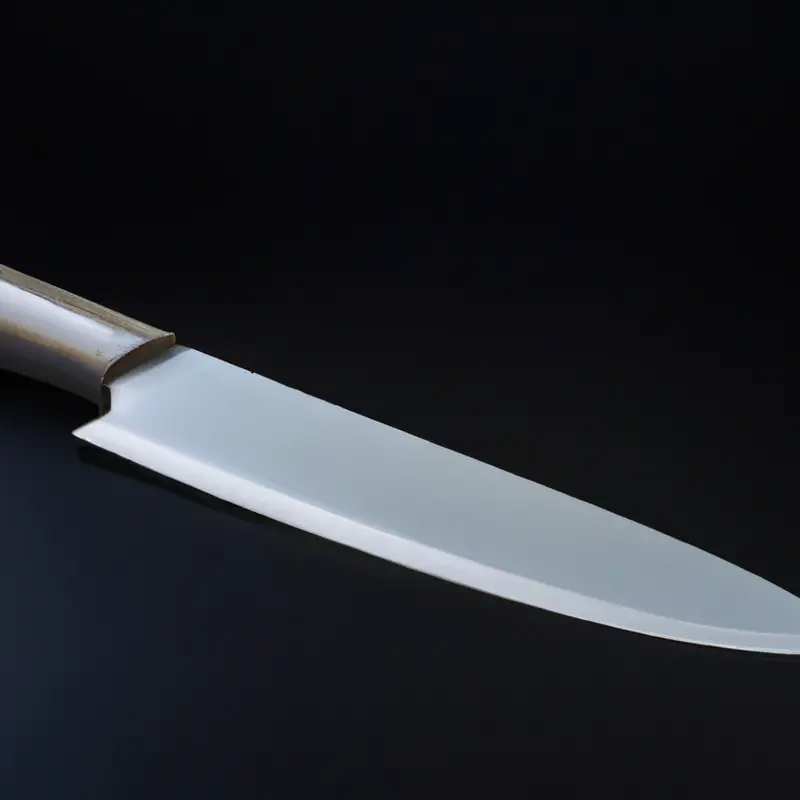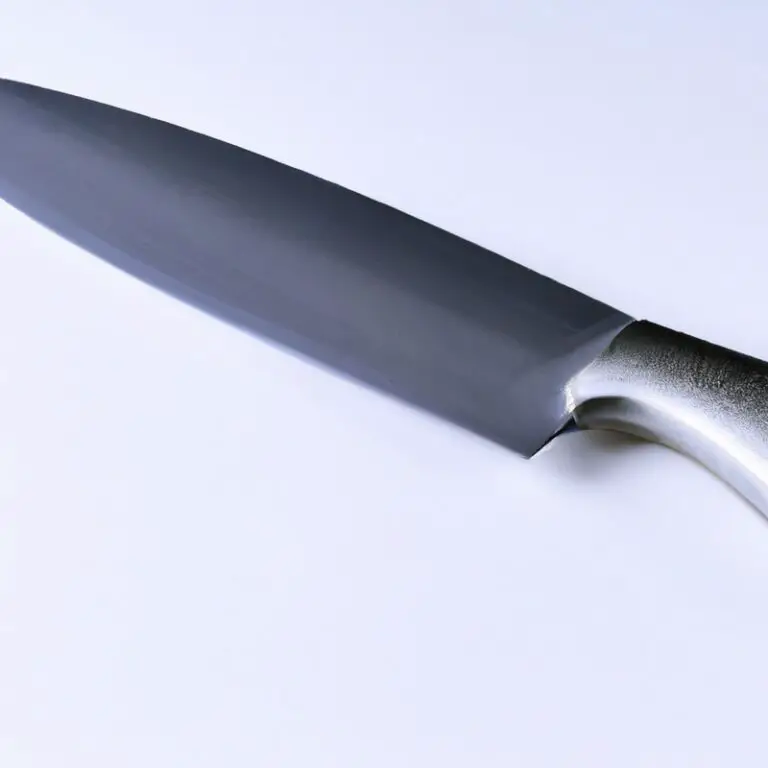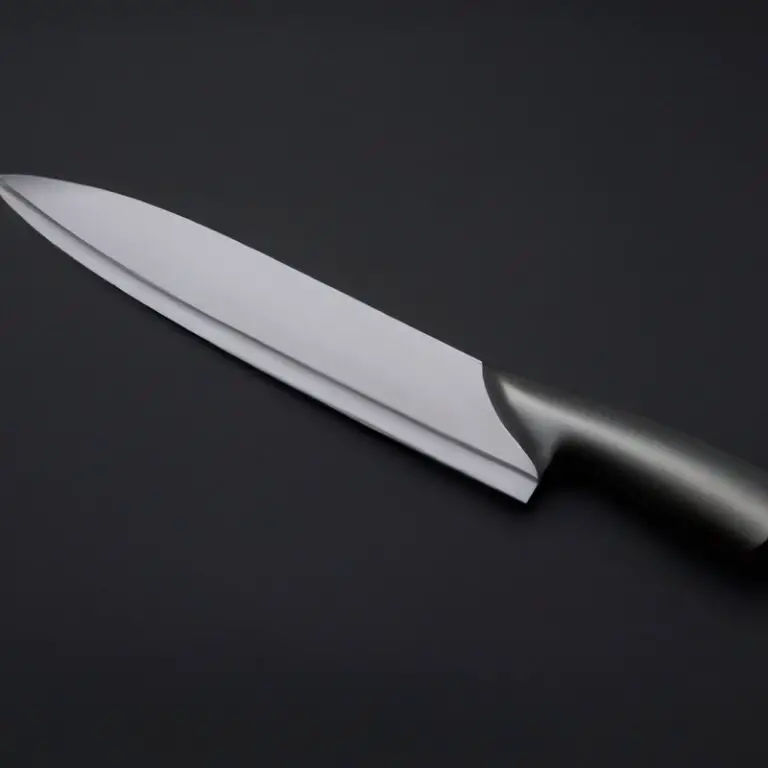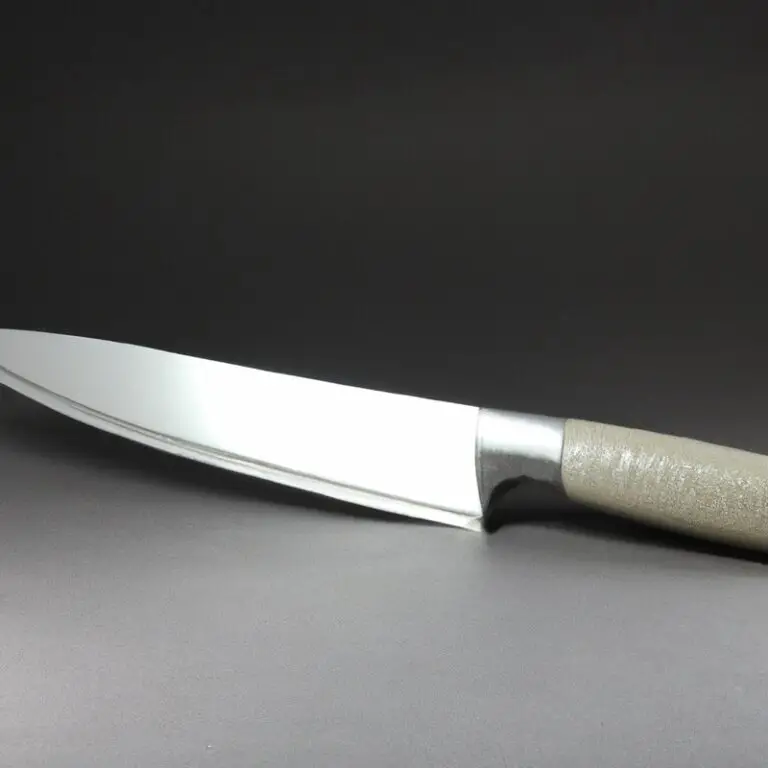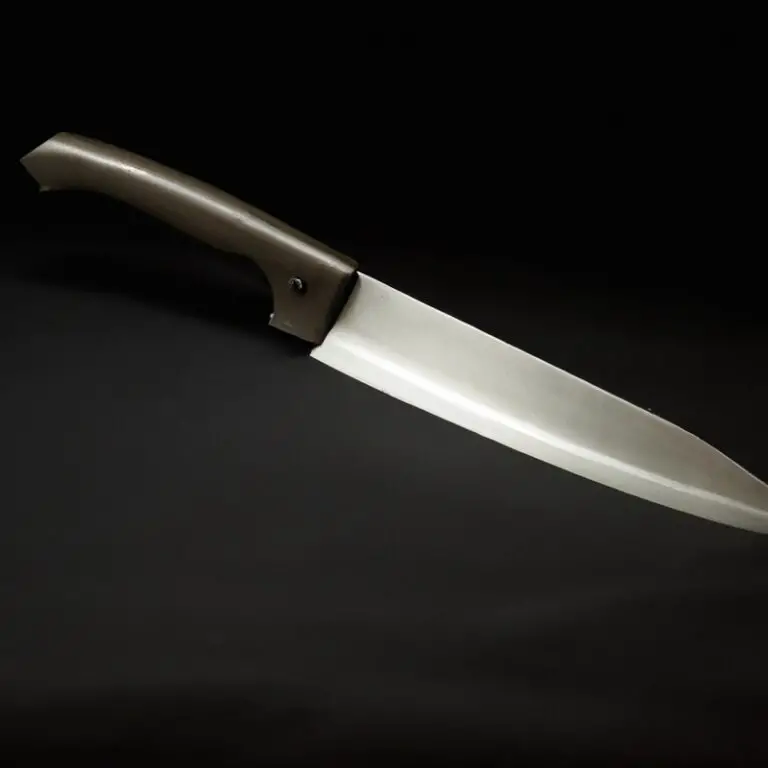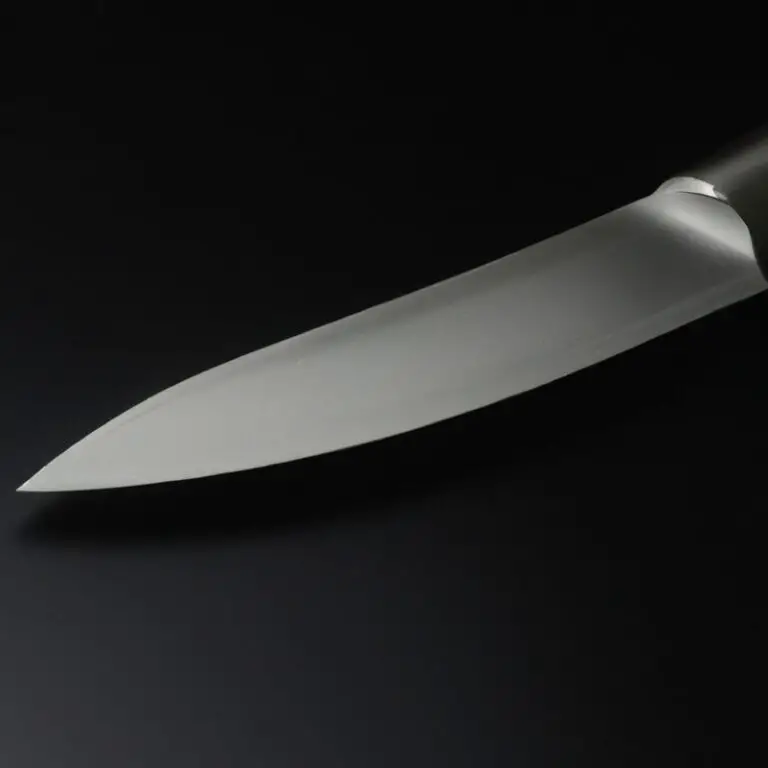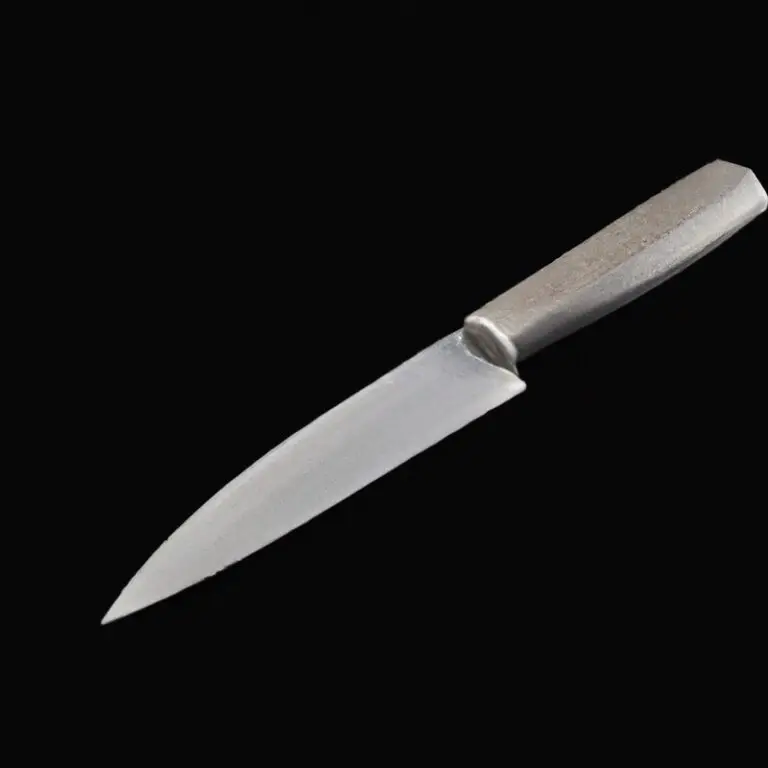Why Should You Consider Using a Santoku Knife? Slice Like a Pro!
Key Takeaways:
- 4) When choosing a Santoku knife, look for one that fits comfortably in your hand and is made from durable, high-quality materials for maximum longevity.
Are you tired of struggling with a dull or bulky kitchen knife? Look no further than the Santoku knife.
This Japanese blade has risen in popularity among home cooks and professional chefs alike for its unique design and versatility in the kitchen.
In this article, we’ll cover the history and evolution of the Santoku knife, how it differs from traditional Western knives, and the benefits of incorporating it into your culinary arsenal. Plus, we’ll share tips on choosing, using, and maintaining your Santoku knife, so you can slice and dice with ease and precision.
| Reasons to Consider Santoku Knives |
|---|
| 1. Versatile: A Santoku knife can help you perform many tasks in the kitchen, from slicing and dicing to finely chopping herbs and vegetables. |
| 2. Efficient: The blade’s wider design allows for a more efficient chopping motion, reducing strain on your wrists and helping to speed up your prep time. |
| 3. Lightweight: While Santoku knives can be just as sharp as their heavier counterparts, their lighter weight can make them more comfortable to use for extended periods. |
| 4. Stylish: Santoku knives are known for their sleek and elegant design, making them a great addition to any kitchen collection. |
| 5. Suitable for Vegetarian and Vegan Diets: The broader blade of a Santoku knife helps when cutting denser fruits and vegetables, such as sweet potatoes or butternut squash. |
| 6. Affordable: Compared to other high-end kitchen knives, Santoku knives are relatively affordable, making them an excellent choice for home cooks and professionals alike. |
History and Evolution of Santoku Knives
The history and evolution of Santoku knives dates back to Japan in the early 20th century. The word Santoku translates to “three virtues,” symbolizing the knife’s ability to chop, slice, and dice.
Originally designed for home cooks, the Santoku knife gained popularity in the Western world for its unique shape and versatility.
Unlike Western knives, the Santoku has a shorter and wider blade with a straighter edge. This design reduces the time needed to prepare food and allows for precision cutting of small ingredients.
Additionally, the hollow ground edge reduces the chances of food sticking to the blade.
Today, Santoku knives are used by both home cooks and professional chefs worldwide.
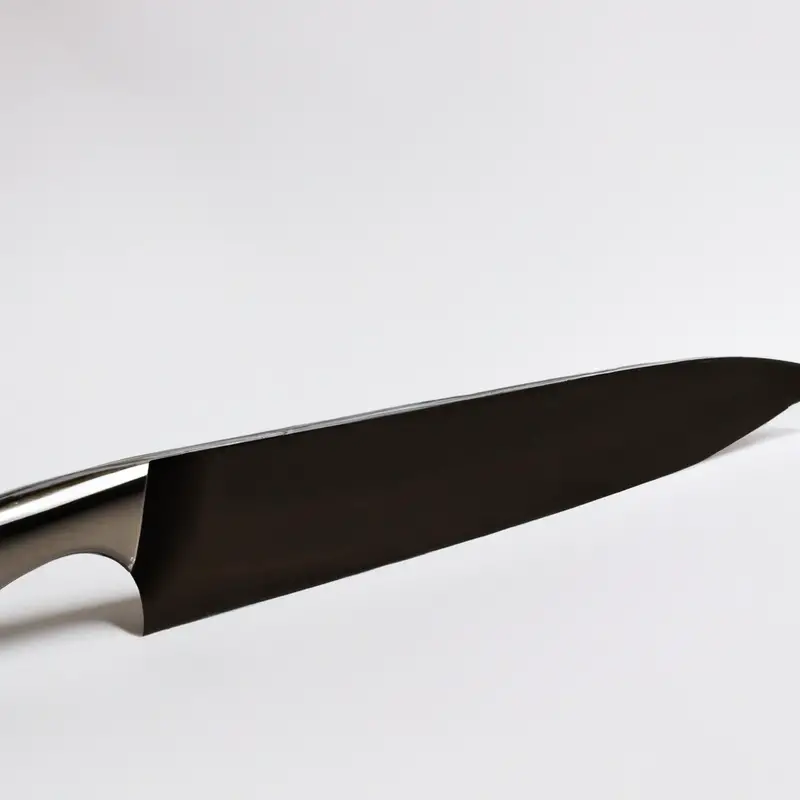
What Makes the Santoku Knife Different From Western Knives?
The Santoku knife has a flat edge and a shorter blade compared to Western knives, which make them more versatile for general kitchen tasks. The rounded tip of the Santoku knife allows for a rocking motion, while its wider blade gives it the ability to handle tough vegetables with ease.
The Santoku knife also has a thinner, lighter blade, which enables it to make precise, clean cuts.
Unlike Western knives, Santoku knives’ blades are made from harder steel, which retains its sharpness for longer periods, and they have a Granton edge, which prevents food from sticking to the blade. Overall, Santoku knives are highly versatile, easy to handle, and perfect for a wide range of kitchen tasks.
The Anatomy of a Santoku Knife: Blade, Handle, and Tang
The Santoku knife typically has a straight, symmetrical blade that ranges from 5 to 8 inches long. Its wider blade makes it ideal for chopping, slicing, and dicing vegetables, fish, and meat.
The handle is usually made of wood, plastic, or composite materials and provides a comfortable grip.
The tang refers to the portion of the blade that extends into the handle and provides stability and balance. A full-tang knife is generally considered more durable and balanced compared to a partial-tang knife.
The blade of a Santoku knife can be made from different materials, including high-carbon steel, stainless steel, and ceramic.
It’s crucial to choose a blade that suits your needs and preferences and maintain it properly for optimal performance. A well-constructed handle with a sturdy tang and a sharp blade are essential features to look for in a Santoku knife.
Santoku Knife vs Chef’s Knife: Which Should You Choose?
Santoku knives and chef’s knives serve different purposes in the kitchen. While chef’s knives are more versatile and perfect for heavier tasks, santoku knives are lighter and more suitable for delicate cutting tasks.
If you’re seeking a knife for precision cutting or tasks like slicing fish or vegetables, then santoku knives are the best choice.
But if you need a workhorse tool that can handle larger and tougher cuts of meat and vegetables, consider getting a chef’s knife. Ultimately, the choice between the two depends on your specific needs and preferences.
How to Choose the Right Santoku Knife for Your Needs?
When choosing the right Santoku knife, it is essential to consider three key factors: size, handle, and material. Size: Choose a blade length that suits your needs.
For home cooking, a 5-7 inch blade will suffice, while professional chefs may prefer an 8-10 inch blade.
Handle: Look for a handle that fits comfortably in your hand and provides a secure grip. It is preferable to choose a full tang knife with a bolster for added balance and control.
Material: When it comes to the blade material, opt for high-quality stainless steel or high-carbon steel.
Stainless steel blades are resistant to rust and corrosion, while high-carbon steel offers durability and sharpness. Consider your budget and the intended use of the knife before making a purchase.
It is recommended to invest in a high-quality Santoku knife from a reputable brand.

Benefits of Using a Santoku Knife for Home Cooks and Professional Chefs
Using a Santoku knife offers numerous benefits to both home cooks and professional chefs.
- Versatility: The Santoku knife is versatile and can easily handle different cutting tasks including slicing, chopping, and dicing. It is an all-purpose knife suitable for cutting vegetables, meat, and fish.
- Lightweight and Easy to Handle: Unlike most Western knives, Santoku knives are lightweight and easy to handle. Their thin, sharp blades allow for effortless cutting, reducing hand fatigue during prolonged use.
- Durability: Santoku knives are made from high-quality materials, making them durable and long-lasting. With proper care and maintenance, they can last for years without losing their sharpness.
- Precision Cutting: The Santoku knife’s blade is sharp and thin, making it ideal for precise cutting tasks. It allows for clean, accurate cuts, resulting in uniform slices of ingredients.
- Aesthetics: Santoku knives come in a variety of designs and materials, making them aesthetically pleasing. They can add a touch of style to your kitchen and make it look more professional.
Overall, a Santoku knife is a must-have tool in any kitchen. Its versatility, durability, precision cutting, and aesthetic appeal make it an excellent investment for both home cooks and professional chefs.
How to Properly Hold and Use a Santoku Knife for Effortless Cutting
To properly hold a Santoku knife, use a pinch grip by placing your index finger and thumb at the base of the blade. This grip allows for better control and precision.
When using the knife, keep your other fingers curled inward towards the handle to prevent injury.
Use a slicing motion, rather than a chopping motion, to achieve clean cuts. Start with the tip of the blade and pull it backwards towards you while gently pressing down.
Maintaining a sharp edge and using a cutting board can also make cutting with a Santoku knife effortless.
Maintenance and Sharpening Tips for Your Santoku Knife
Proper maintenance and sharpening are essential to prolong the lifespan of your Santoku knife and ensure optimal performance. Here are some tips to keep your knife in top condition:
- Hand wash your Santoku knife with warm, soapy water, rinse, and dry immediately after each use to prevent corrosion and rust.
- Avoid using abrasive sponges or harsh detergents that can damage the blade’s finish and compromise its sharpness.
- Store your knife in a protective sheath or on a knife block to minimize exposure to moisture and prevent accidental damage.
- Regularly sharpen your Santoku knife using a honing steel or sharpening stone to maintain a razor-sharp edge. Professional sharpening services are available for more advanced maintenance.
- Use the proper sharpening angle recommended by the knife manufacturer, usually around 15-20 degrees.
By following these simple maintenance and sharpening tips, you can ensure your Santoku knife stays in excellent condition for years to come.
Cooking Techniques That Are Best Suited for Santoku Knives
Cooking Techniques That Are Best Suited for Santoku Knives:
- Slicing: The sharp and thin blade of Santoku knives is perfect for slicing meats, vegetables, and fruits.
- Dicing and Chopping: Santoku knives are excellent when it comes to dicing and chopping ingredients for stir-fries, soups, and stews.
- Rocking Motion: The blade’s shape allows for a smooth and effortless rocking motion, which helps in mincing herbs and garlic.
- Precision Cutting: The slender blade allows for intricate cuts and precise slicing, making Santoku knives perfect for sushi and sashimi.
Overall, Santoku knives are versatile and can be used for almost any cooking technique. Their sharpness and thin blade make them an excellent choice for home cooks and professional chefs looking for efficiency in the kitchen.
Top 5 Best Santoku Knives for Every Budget
Top 5 Best Santoku Knives for Every Budget:
- Wusthof Classic, 7-Inch Santoku Knife – A high-end option for professional chefs with a full tang forged blade and comfortable handle.
- Global G-48, 7-Inch Santoku Knife – A mid-range option that is lightweight, easy to handle, and well balanced.
- Victorinox Fibrox Pro, 7-Inch Santoku Knife – A budget-friendly option with a comfortable grip, non-slip handle, and durable stainless steel blade.
- Shun Classic, 7-Inch Santoku Knife – A premium choice with a unique Damascus steel blade pattern, comfortable handle, and balanced weight distribution.
- Mercer Culinary Millennia, 7-Inch Santoku Knife – An affordable option with an ergonomic handle, sharp blade made from Japanese steel, and superior grip.
No matter what your budget is, there is a Santoku knife that can fit your needs. These top 5 options offer a range of prices, materials, and features to give you the best Santoku knife for your money.
Santoku Knives for Left-Handed Cooks: Features to Look Out For
Left-handed cooks need to pay attention to certain features when selecting a Santoku knife. Look for a knife with an ambidextrous handle that offers a secure grip for both left and right hands.
The blade should be designed with a straight cutting edge that allows for a smooth slicing motion.
Verify that the blade has a symmetrical grind to ensure that it cuts evenly no matter which hand is used. Ensure that the blade is made of durable, high-quality steel to ensure its longevity.
Lastly, choose a knife with a comfortable weight and balance to ensure that it is easy to maneuver.
By selecting a Santoku knife with these features, left-handed cooks can enjoy the same precision and effortless cutting as their right-handed counterparts.
The Importance of Investing in a High-Quality Santoku Knife
Investing in a high-quality Santoku knife is essential for any home cook or professional chef. A well-crafted Santoku knife adapts to a variety of cutting techniques, including slicing, dicing, and chopping, making it a versatile tool in the kitchen.
A high-quality blade will retain its sharpness for longer than a cheaper counterpart, which can save time and effort.
Additionally, a well-balanced knife with a comfortable handle reduces hand fatigue and the chances of developing repetitive strain injuries. Investing in a high-quality Santoku knife is a worthwhile investment for any avid cook who values precision, versatility, and efficiency in the kitchen.
Taking Care of Your Santoku Knife: Storage and Safety Precautions
To ensure your Santoku knife remains sharp and safe to use, it’s important to properly store it and take appropriate safety precautions. When storing your knife, it’s best to use a blade guard or protective sheath to prevent accidental cuts.
Avoid storing your knife in a drawer with other utensils as this can damage the blade or cause it to dull more quickly.
To clean your Santoku knife, use a damp cloth to wipe down the blade, and never put it in the dishwasher as exposure to high temperatures and abrasive detergents can damage the blade and handle. When using your Santoku knife, always keep your fingers away from the blade and use a cutting board to prevent damage to your countertops.
Avoid using the knife to cut through hard materials, such as frozen foods or bones, which can damage the blade.
Properly maintaining and storing your Santoku knife not only ensures that it will remain sharp for longer, but also helps to prevent accidents and ensure safe use in the kitchen.
Making the Most of Your Santoku Knife: Tips and Tricks for Everyday Cooking
Making the most of your Santoku knife requires some knowledge about how to use it properly. Here are some tips and tricks to get you started:
- Use a cutting board: Always use a cutting board to protect your knife and get clean cuts.
- Hold the knife properly: Hold the handle with a firm but comfortable grip and use your fingers to guide the blade.
- Use a rocking motion: The Santoku knife is designed for a rocking motion, so use it to your advantage when chopping or slicing.
- Keep the blade sharp: A sharp blade is essential for effortless cutting. Use a honing rod or sharpening stone to keep the edge sharp.
- Use the tip for precision work: The tip of a Santoku knife is perfect for detailed work, such as peeling, trimming, or slicing.
- Make use of the Granton edge: Many Santoku knives have a Granton edge, which helps prevent food from sticking to the blade. Use this feature to your advantage when cutting meat or vegetables.
- Cut in a straight line: Use the full length of the blade to cut in a straight line. This will make your cuts more even and consistent.
By following these tips and tricks, you can make the most of your Santoku knife and elevate your everyday cooking experience.
Santoku Knives in Popular Culture: Movies, TV Shows, and Cartoons
Santoku knives have gained popularity not only in the kitchen but also in popular culture. In various movies, TV shows, and cartoons, Santoku knives have been featured as a symbol of culinary excellence.
For example, in the popular cartoon show “Bob’s Burgers,” the character Bob holds a Santoku knife for all his cooking needs.
Additionally, renowned chef and television personality, Gordon Ramsay, is known to use a Santoku knife in his cooking shows and competitions. The Santoku knife’s versatility, sharpness, and ease of use make it a popular choice among chefs both on screen and in the kitchen.
Whether you’re a home cook or professional chef, investing in a high-quality Santoku knife will not only enhance your cooking skills but also add a touch of elegance and sophistication to your kitchen.
How to Gift a Santoku Knife: Ideas and Best Practices
If you are thinking of gifting a Santoku knife to your loved ones, you must consider a few things to make the gift recipient happy. Firstly, determine the purpose of the knife, such as whether it will be used for professional or everyday use.
Then, choose the right size and weight to suit the recipient’s hand size and preferences.
Consider a knife that comes with a protective cover to ensure safe storage and transportation. You can also personalize the knife by engraving the recipient’s name or initials on the blade or handle.
It’s a good idea to purchase the knife from a reputable brand to ensure quality and durability.
Additionally, you can include a care and maintenance guide to ensure your gift lasts for a long time. Lastly, you can package the knife in an elegant gift box to make the present more special and appealing.
Advanced Cooking Techniques to Try with Your Santoku Knife
There are several advanced cooking techniques you can try with your Santoku knife once you have mastered the basics.
- Precision slicing: The thin, sharp blade of the Santoku knife makes it perfect for precision slicing of meats, fish, and vegetables. You can slice paper-thin cuts of raw fish or create uniform slices of beef for stir-fry dishes.
- Chopping herbs: The curved blade of a Santoku knife makes it easier to chop herbs like cilantro, parsley, and basil finely and evenly without bruising them. Hold the herbs with one hand and use a rocking motion to chop them into small pieces.
- Dicing vegetables: Use a Santoku knife to dice vegetables like onions, bell peppers, and carrots. Place the vegetable flat side down and use a rocking motion to make vertical and horizontal slices, then chop into small cubes.
- Shredding cabbage: The Santoku knife’s thin blade can be used to shred cabbage for coleslaw or other dishes. Hold the cabbage with one hand and use a sawing motion to slice it thinly.
- Mincing garlic: The flat side of a Santoku knife can be used to crush and mince garlic with ease. Crush the garlic with the side of the knife, then use a rocking motion to chop it finely.
Remember to always use a sharp Santoku knife, and practice these techniques slowly and safely to avoid accidents. With practice, you can elevate your cooking skills and create professional-quality dishes at home.
Final Word: The Versatility and Reliability of Santoku Knives
Santoku knives are incredibly versatile and reliable in the kitchen. The blade design makes it perfect for chopping, slicing, and dicing, while the comfortable handle provides an excellent grip.
Whether you’re a professional chef or a home cook, a Santoku knife is a must-have in your kitchen arsenal.
Its unique features allow for effortless cutting of various ingredients, including vegetables, herbs, and meats. Moreover, a high-quality Santoku knife can last for decades if adequately maintained and sharpened.
Overall, investing in a Santoku knife is an excellent decision that can significantly improve your cooking experience.
Final Verdict
The Santoku knife is a versatile and reliable kitchen tool that every home cook and professional chef should consider adding to their collection. From its unique design to its efficient cutting performance, the Santoku knife is a game-changer in the kitchen.
By understanding the features and benefits of a high-quality Santoku knife, you can make an informed decision when choosing the right knife for your needs.
Investing in a reliable and well-crafted Santoku knife will not only improve your cooking experience but also elevate the taste and presentation of your dishes. So, whether you’re a beginner cook or a seasoned pro, the Santoku knife is a must-have tool in your kitchen arsenal.
Trust us, you won’t regret making the switch.

